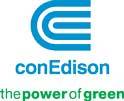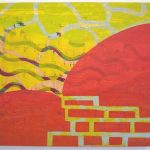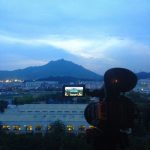IAP Featured Report: Top 9 Tips for Thriving in New York City
IAP volunteer, educator, and blogger Kendra Howard reports tips and advice for working in the arts and navigating opportunities in New York City.
On Tuesday, July 12, more than 60 of the Immigrant Artist Mentoring Program’s current participants, mentors, and alumni from 2007 and onwards met up at the annual Alumni Mixer to hear from representatives of New York City organizations.
There were three panelists leading the discussion: Katrina Neumann, visual artist, curator, and Founder of Rate My Artist Residency, Morgan Lindsey Tachco, a creative administrator at Brooklyn Arts Council, and Catherine ‘Cate’ Yu, a playwright and the Director of Public Programs at the Asian American Arts Alliance.
These women arts professionals came prepared with advice, personal experience, and an abundance of resources to offer the diverse group that filled the NYFA conference room. The artist-audience, with backgrounds in various fields including performing, literary, multidisciplinary, and visual arts, were eager to know the “secrets” for getting their name out there and their art known.
Here are the nine ways to thrive offered by the panelists sorted by category:
When reaching out about opportunities:
1. Think about what you can do. You need to seek out quality over quantity; try to target the organizations and galleries that match the art that you are producing. – Katrina
2. Don’t be afraid to cold call. If you can find someone’s contact information, that means they want you to contact them. However, before you send out a letter of inquiry, make sure you draft your letter, read it over to confirm there is a specific purpose for why you are writing to that person. Think, what is your question or what is it that you need? Don’t just ramble on and on about what you do. – Catherine & Morgan
How to access opportunities in New York City where the opportunities are plentiful but the competition is strong:
3. Figure out who you are as an artist, what your work is about and what you want to do next. This will help you understand the other artists, galleries or organizations that you best align with. Being able to answer these questions will allow you to zero-in on the resources you are looking for. – Morgan
4. Persevere. Keep doing what you’re doing and keep applying (strategically). Especially for the visual artists in the city, there are so many galleries in New York City, so you can take advantage; show up to openings, build relationships, and network. It is easier to learn about what a gallery wants and needs by knowing the people running these spaces. – Katrina
How to improve your chances of success during the application process:
5. Read the instructions! Make sure you, your project and your art aligns with the grant, residency, gallery etc… if not, find a different grant, residency or gallery that is more specific to what you do. – Morgan
6. Your peers are a resource. They can help explain to you what your strengths and needs are as an artist. As an outsider looking in, they may have better insight into things you are overlooking that may be useful information in your application. – Catherine
7. Read the mission statement of the organization, gallery, venue etc. that you are applying to and look at past residents. This will give you an idea of the type of art they have supported in the past and what they are willing to accept in the present. – Katrina
8. Develop a writing practice about your work. It is important to be able to talk about what you do in a way that others find engaging. As you are doing a project, try to take notes about each specific step and how you are working through the process. The notes will be useful when you reach the end of your project because you won’t have to try and remember everything you did and how you felt. – Morgan
9. Even if you are not a “good” writer, it’s important to still understand and to be able to explain what you do as an artist. Tape-record yourself talking about your artwork—maybe even in your native language—and transcribe what you said. Think about these questions to get you started: What is the theme of my work? What drives me to create? What is this for? Being able to accurately and honestly respond to these questions will benefit you immensely when it comes time to answer them on applications. – Catherine
Hear more thoughts from Cate Yu who organized a panel, Mapping Resources for Immigrant Artists, hosted by Museum of Chinese in America, that was published as last month’s feature article.
This story originally appeared in the ConEdison Immigrant Artist Program Newsletter #83. Subscribe to this free monthly e-mail for artist’s features, opportunities and events here.
Image: IAP Panel Discussion, NYFA, 2016. Photo: Maria Koblyakova






